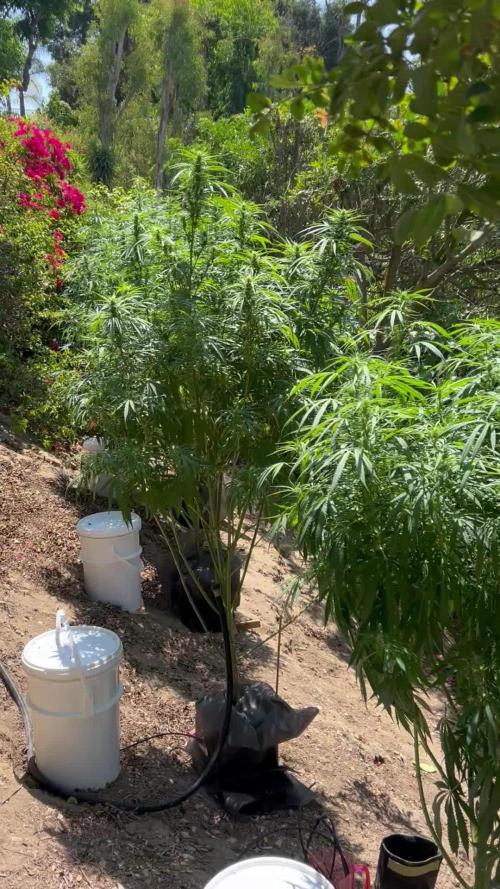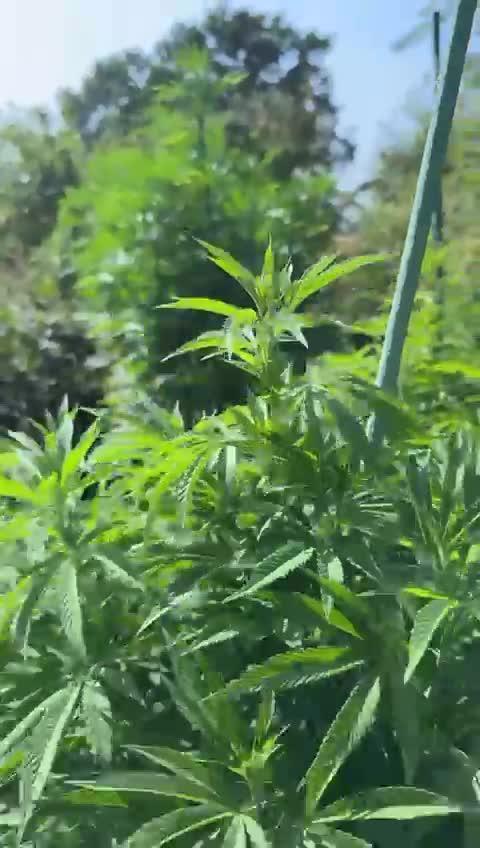The Grow Awards 2026 🏆 





























Likes
Comments
Share


@420DeepGrow
Follow
Increíble, apesta a frutas y cítrico, estoy deseando probar, todavía le falta un poco de curado.
Cogollos con una dureza media pero totalmente llenos de resina
Likes
3
Share


@KushManAdam420
Follow
Phone was out of action , will try and fill up the missing weeks , 3 plants have been harvested
All photos taken day 76
Processing
Likes
16
Share


@PoshGrow
Follow
Welcome to Ultimate Auto Grow by PoshGrow!
🍀 Week #6 2020 October 5th. - 12th.
General Info:
When planted: 2020 September 1st.
Week: 6
Days: 35 - 42
Last Update Day: 2020 October 9th.
Plants:
4 x OG Kush Auto
3 x Amnesia Auto
5 xAlaskan Purple Auto
2 x Blueberry Auto
1 x Northern Lights Auto
Total: 15 girls.
NOTICE: Check week 1 for full equipment list!
UPDATE: I got 8 ltr. Or 2 gallon Spear&Jackson Pressure Sprayer to help me with watering.
Comment:
Finally no problems at all. GHE nutriens really doing their job, plants love it! Girls look happy and healthy, going to use dehumidifier to control RH.
Easy week, with only few touches to LST.
Peace! ✌️
Likes
14
Share


@CrazyRussian
Follow
This is the third monday. The girls still look healthy, I gave blooming nutrients for the first time as the schedule suggested.
The Attack of Gnats:
Inside the tent there is a huge fan, which was unstable, if I tilted it too much, so I put a 20litre soil bag (with some cheap shitty soil for decorative flowers) at the base of it to make it solid. As the tent started to warm up, the soil was warm ask well. After a couple of days some gnats mysteriously appeared in the tent. First there were only two, but now there is a whole army. I bought a "special" trap for them, it came in a pear shaped plastic dispenser with some sort of "killer liquid" that will eliminate the enemy. As soon as I opened the little container with the liquid my first idea was to smell it. Surprisingly the smell was familiar, and I smelled it before in salads. I asked my girlfriend, and she immediately told me, that this killer liquid is nothing more than Apple Cider Vinegar. I searched google, and I found out, that you can make very effective gnat trap at home by using apple cider vinegar, sugar, and dish soap... This costs you almost nothing, because you can find everything at home. Learning every day.... :) Now there are only a few more gnats left, but I will kill them in the following days. 🙏 Namaste
Likes
1
Share


@LokalGrenz
Follow
6/7 flipped to flower leafs lil droopy due to over watering a lil bit but it’ll bounce back and everything else looking good tho I think the flowering stretch is going be wild haven’t grown one this tall before going have to move the light up some more soon
Likes
33
Share


@Wicked_Stix
Follow
They survived another week. Lowered the temp to 72 for the remainder of the grow. Wanting to see if it adds anything to the flavors and aroma. Just going to keep the juice pumping until they dont want anymore.
Likes
5
Share


@Ninjabuds
Follow
Obama runtz x gas tax sad to say both seedlings are super crappy so far. If it was not for the gas tax parent being the best flower ever then I wld just toss these but sometimes the crappy slow growing plants end up being super dank
It's looking like a good start to a week the plants are strong they are getting to the point I can let the dried dry out completely. I'm thinking by the end of this week the plants will be starting to be sold.
Last week I put all the plants into my bigger 2x4 tent with my medicgrow mini sun 2 the 500w version. Only a few of the plants were ready for that light. Seems like the only plants that really have good resistance and have a strong start are the weedseedsexpress.com seeds. Shout out to weedseedsexpress.com for the strong plants.
I ended up putting all the plants back into my 2x2 tent with the 55w amazon light it has alot more blue light in its spectrum. It's kinda weird b4 I switched the plants to the 2x4 tent they were getting 220umol under my amazon 55w led then when I put them under the 500w light 25% strength about 50in from plants and they were getting only about 195umol in that tent but it was stressing most the plants. I assume a larger light has more side lighting hitting the plants. I think when useing larger lights it's good to measure umols from the top but also coming from the sides. I think durring seedling stage they only need about 50% the umols coming from the side the plants as the top is receiving.
When I put the plants back in the small tent about the same umols as they were getting b4 the switch and they were still a little stressed. So for a few days I put the small light at the top the tent giving them 100umols for a few hrs then 130umols the rest the day.
Processing
Likes
15
Share


@eldruida_lamota
Follow
Que hay de nuevo familia, os traigo la actualización de la semana de nuestras crazy cookies, increíble el tamaño que están alcanzando los centrales, hay que tener bastante cuidado con los nutrientes, si te pasas un poco te lo harán saber.
Tienen un olor bastante peculiar, estas últimas semanas desarrollará todos sus terpenos.
Ph seguimos controlándolo alrededor de 6.5 temperatura algo elevará y humedad perfecta por debajo de los 40%.
No creo que tarden mucho en estar siguen engordando y formando esas flores, la semana que viene veremos cómo avanzan fumetillas.
Likes
10
Share


@Todzilla
Follow
This week we moved the plants to a more secluded location, which was easier with small autopots. Leveling and terracing the equipment was a pain. I put individual 6 gallon reservoirs for each plant. This allows me about three days before filling up the reservoirs.
The biggest problem again was the plants falling over because of wind.
They have hit the ground over 20 times, maybe thirty. Each time this dumps the reservoir, so I had to make a ton of water this week. But they keep chugging along.
I staked and wired them down and so far so good for three days.
The plants are big, with my biggest being 7 1/2 to 8 feet tall. They have mostly recovered from falling over so many times. The branches have hardened so I can’t really stretch out the branches anymore. They’re tighter than I planned….
Flowering has started and should start stacking up on one or two of the plants next week. I’m just running Jack’s RO for weeks 4 to 8. I may start with some fulvic and humic acid soon.
Best of luck on your grow.
Likes
13
Share


@Organic_G
Follow
Hmmm der Bro hat einiges an Trimmen vor sich wenns fertig wird 🤣 alles was denen an Dünger gegeben wurde ist reine Pisse straight aus der Blase haha
Likes
9
Share


@Kindbot
Follow
Began with equal parts of GH at a very diluted concentration.
This week, I increased the concentration to the manufacturer's recommended dosage for seedlings (1/4 tsp per gallon).
Likes
202
Share


@CrazyHorse
Follow
😇 😇 😇 Hi to all growers 😁 😁 😁
So let's start !! The first day of the girls' first week of life is a fact 💪 💪 💪
Some technical details:
- Light cycle 20.5h on 3.5h off
- Mars TSW first week set to 50% power
- Ventilation RAM 4" 165m3 / h
- Air humidifier from China ( doing job!! )
- 3x AutoPot + 3x AirDome
See you soon, You Lovely Girls Growers 😇 😉 🙌
Likes
79
Share


@Roberts
Follow
Alien OG Autoflower grew great, and finished beautifully. Strong smell, frosty, and sticky. She grew great under the Mars Hydro FC4800 light. It was my first time using the Gen 1:11 nutrients. I really like them, and will use again till I run out or get more. She will hang dry 24 hours then be put into the cannatrol for a 8 day cycle. I got a great grow to try it out the first time. 🤞. Thank you Aeque Genetics, Gen1:11, and Mars Hydro. 🤜🤛🌱🌱🌱
Thank you grow diaries community for the 👇likes👇, follows, comments, and subscriptions on my YouTube channel👇. ❄️🌱🍻
Happy Growing 🌱🌱🌱
https://youtube.com/channel/UCAhN7yRzWLpcaRHhMIQ7X4g
Likes
22
Share


@Swanberg
Follow
Lil ones gaining strength, transplant monday? To 5 gal...Taking trip to Arizona for thanksgiving so should be a pleasant return to see some big growth.
Likes
32
Share


@Weird_Jimmy
Follow
👉The calixs have gotten plump and not many fresh pistols are around, just the occasional on on each cola. Fox-tailing has been more pronounced and what looks like a see has appered at the tips of a couple of colas. I have not seen a hermie bit , but the plant is big and impossible to inspect very closely. I wont be able to get a better look at it until the gorilla is out of the tent and I can move the plant into the center and rotate it. The lowest leaves around the base have started yellowing between the veins. I'm sure I'm not finished with all the little issues this plant will show. The aroma is nice and sweet, hard to smell it over the intensely strong Gorilla glue, which I just finished harvesting. To touch the buds leaves a pine sol aroma that is typical.
👉I moved thru the 8 week mid bloom mix to the 9th week mid bloom mix on the General Hydroponics Drain to waste feed chart for the Flora series. I will move to the 10th week late bloom tomorrow. I have given two (I think...at least two) H2Only irrigations (always followed by full strength fertigations. I may move to the Ripen mix by the end of the week. I think I was expecting it to take a little longer but I may have been wrong. With the plant alone in the tent now I can rotate it again and get a better overal veiw of the plant. Many of the trichomes are already cloudy and this one may finish before the buds get very plump. But that's fine, they are super frosty and dense enough. The structure looks just what a sativa bud might look like, just needs to plump up a bit.



























